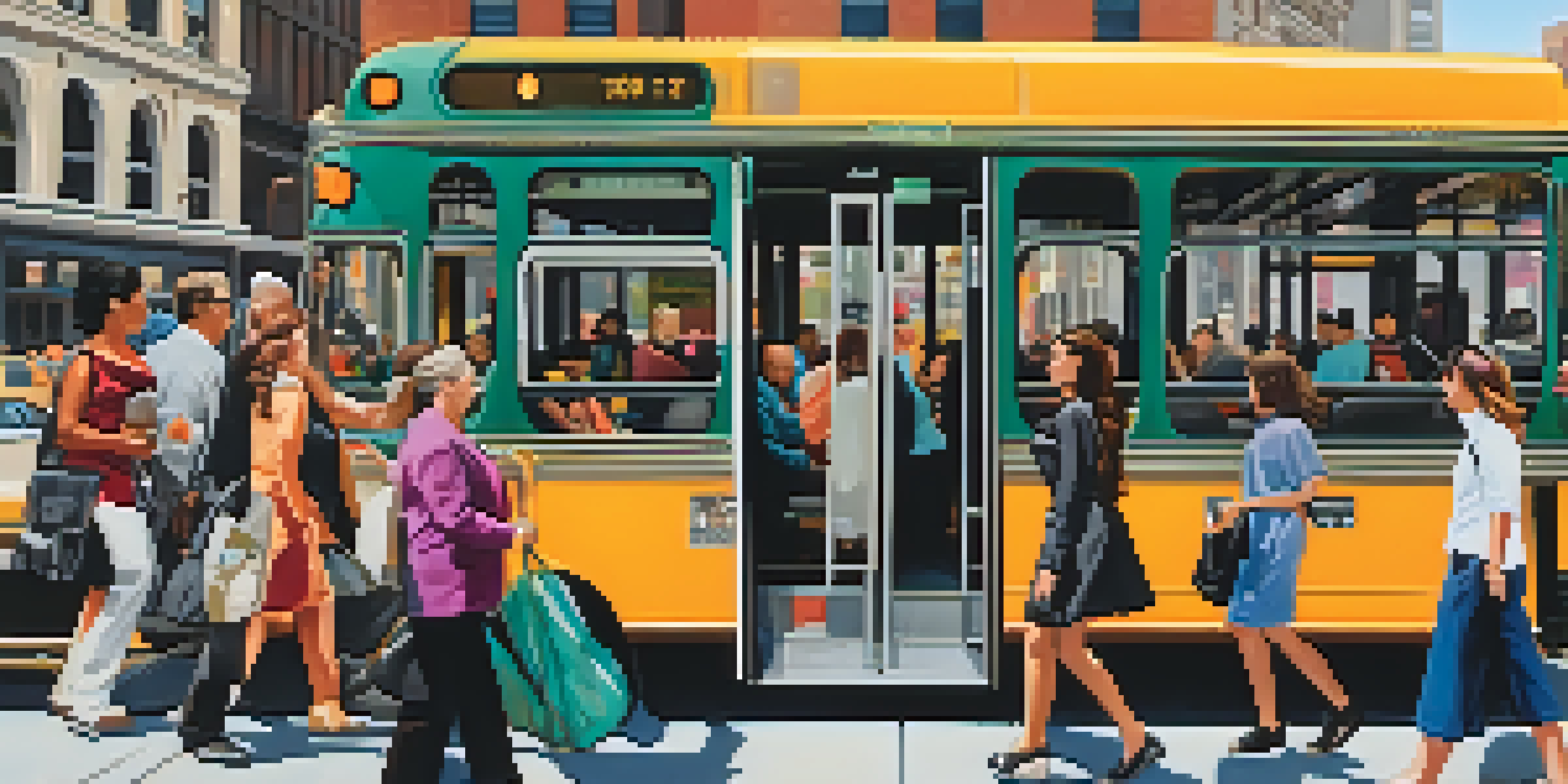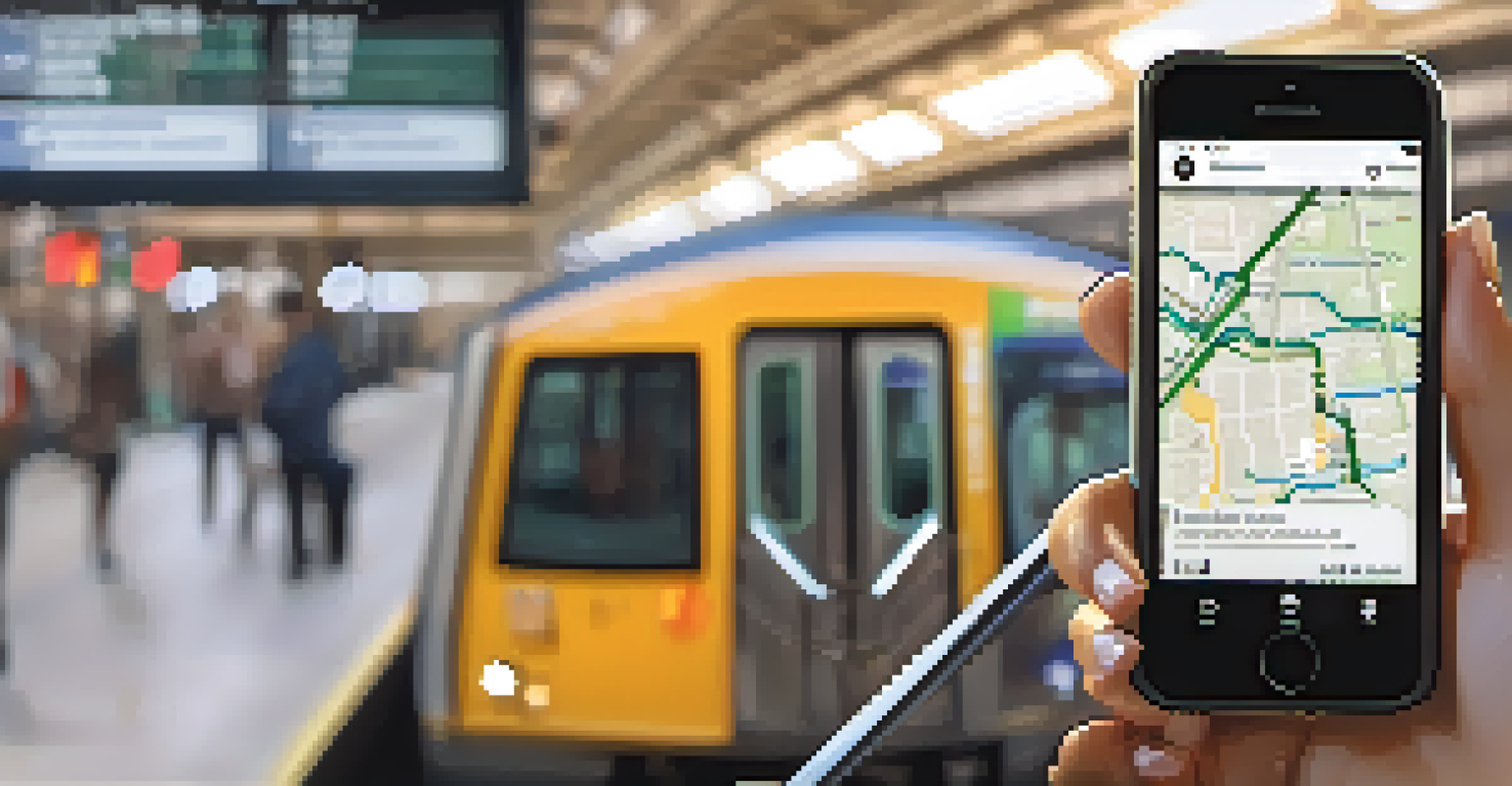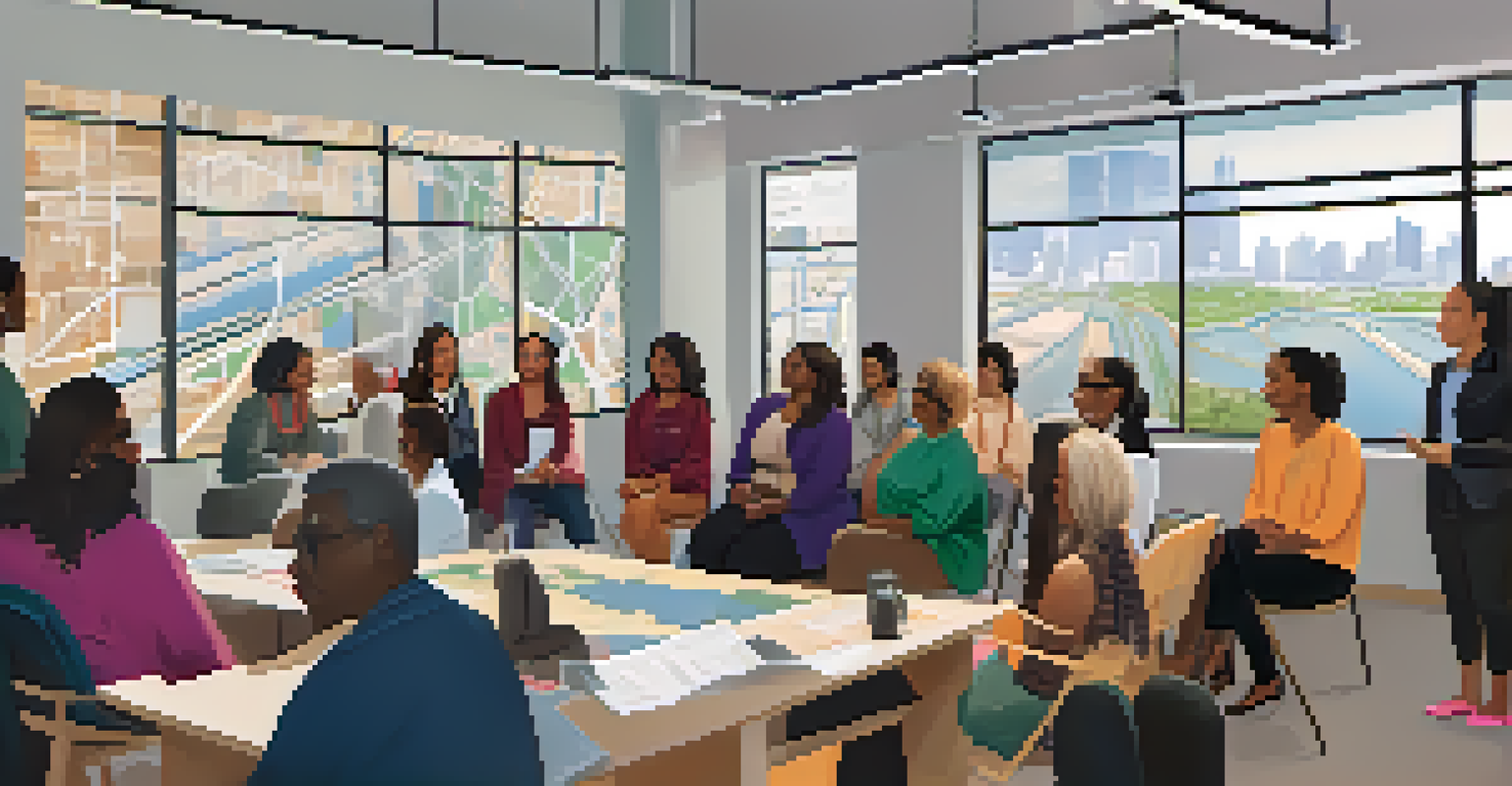Gender and Transportation Equity: Women's Access in NYC

Understanding Transportation Equity for Women
Transportation equity means ensuring that everyone has fair access to transportation options, regardless of gender. In New York City, this issue is particularly pressing for women, who often face unique barriers when navigating the city's transit system. This includes factors such as safety concerns, affordability, and accessibility of public transport.
Transportation is the linchpin of access. Without it, women cannot thrive in their communities.
Many women juggle multiple responsibilities, such as work and childcare, making reliable transportation essential. When public transportation fails to meet their needs, it can lead to missed opportunities and increased stress. Therefore, understanding transportation equity isn't just about logistics; it's about empowering women to fully participate in society.
In a bustling metropolis like NYC, equitable transportation can significantly impact women's quality of life. By addressing these disparities, we can work toward a more inclusive city where all women feel confident and secure traveling from place to place.
Barriers Women Face in NYC Transportation
Women in NYC encounter various barriers in accessing transportation, from safety concerns to inadequate services. For instance, harassment on public transit is a significant issue that often discourages women from using these options. Additionally, the challenge of managing multiple roles—such as being a caregiver or a professional—can exacerbate transportation difficulties.

Moreover, the cost of transportation can be a burden, especially for low-income women. Rising fares can limit their ability to travel freely, impacting their job prospects and social interactions. This financial strain can push women to rely on less safe or less convenient modes of transport, ultimately affecting their overall mobility.
Transportation Equity Empowers Women
Ensuring women have reliable access to transportation is essential for their participation in society and overall well-being.
Accessibility is another critical layer to consider. Women with disabilities or those traveling with children may find public transit options insufficiently accommodating. As a result, these barriers not only limit women's freedom to move but also reinforce broader societal inequalities.
The Impact of Transportation on Women's Lives
Transportation plays a vital role in shaping women's daily experiences and opportunities. For many women, reliable transit means getting to work, attending school, or accessing healthcare services. When transportation systems fail to meet their needs, it can lead to missed appointments and lost wages, creating a cycle of disadvantage.
Equity in transportation is not merely about access; it's about creating a safer, more inclusive environment for all.
Furthermore, the lack of safe and reliable transportation can isolate women from their communities. Social connections are crucial for mental health and well-being, and when women can't easily travel, they risk losing touch with friends and support networks. This isolation can have long-term effects on their quality of life and sense of belonging.
Ultimately, improving transportation access for women isn't just a logistical concern—it's a social justice issue. Ensuring that women can navigate the city freely contributes to their empowerment and strengthens the community as a whole.
Recent Initiatives for Transportation Equity
In recent years, NYC has taken steps to address transportation equity, particularly for women. Initiatives such as improved lighting at transit stops and the introduction of women's-only buses aim to enhance safety and accessibility. These measures reflect a growing recognition of the unique challenges women face in the transit system.
Additionally, advocacy groups have been actively pushing for policy changes that prioritize women's transportation needs. By engaging in community outreach, these organizations help to amplify women's voices in discussions about public transit. Their efforts are crucial in ensuring that transportation policies are inclusive and equitable.
Barriers Limit Women's Mobility
Women in NYC face challenges like safety concerns, high costs, and inadequate services that hinder their ability to travel freely.
While progress is being made, there's still much work to do. Ongoing collaboration between city officials, transportation agencies, and community organizations is essential for creating a transit system that works for everyone, especially women.
Community Voices: Women's Perspectives on Transit
Listening to women's experiences with transportation reveals valuable insights into the challenges they face. Many women share stories of feeling unsafe while waiting for buses or trains, particularly during late hours. These firsthand accounts highlight the need for urgent improvements in transit safety and security measures.
Additionally, women often express the desire for more convenient transit schedules that align with their busy lives. For instance, longer service hours and more frequent routes can make a significant difference for those balancing work and family commitments. By addressing these specific needs, transit authorities can better serve the female population.
Engaging women in the conversation about transportation planning is crucial. By incorporating their feedback, cities can develop solutions that truly reflect the needs of their communities, ultimately leading to a more equitable transportation system.
Technology's Role in Enhancing Transportation Access
Technology has the potential to greatly improve transportation access for women in NYC. Mobile apps that provide real-time transit information, ride-sharing services, and safe navigation tools can empower women to make informed travel choices. These innovations can help mitigate some of the challenges women face when using public transport.
Moreover, technology can facilitate better communication between transit authorities and users. By allowing women to report safety concerns or service issues directly through apps, cities can respond more quickly to problems that affect their daily commutes. This responsiveness can foster a greater sense of security among female riders.
Community Voices Drive Change
Engaging women in transportation planning is crucial for developing solutions that truly address their needs and create an equitable transit system.
However, it's important to ensure that these technological solutions are accessible to all women, regardless of their tech-savviness or access to smartphones. By prioritizing inclusive design and outreach, we can harness technology to create a more equitable transportation landscape.
Future Directions for Women's Transportation Equity
Looking ahead, the future of transportation equity for women in NYC will depend on continued advocacy and innovation. As urban populations grow, addressing the specific needs of women will be critical for building a sustainable and inclusive transportation system. This means ongoing investments in infrastructure that prioritize safety and accessibility.
Furthermore, collaboration between various stakeholders—government agencies, community organizations, and the private sector—will be essential. By working together, we can develop comprehensive solutions that address the diverse needs of women. This collaborative approach can lead to more effective policies and programs that enhance transportation equity.

Ultimately, achieving transportation equity for women is not just about improving transit options; it's about fostering a more equitable society. By prioritizing women's access to transportation, we can create a city where everyone has the opportunity to thrive.